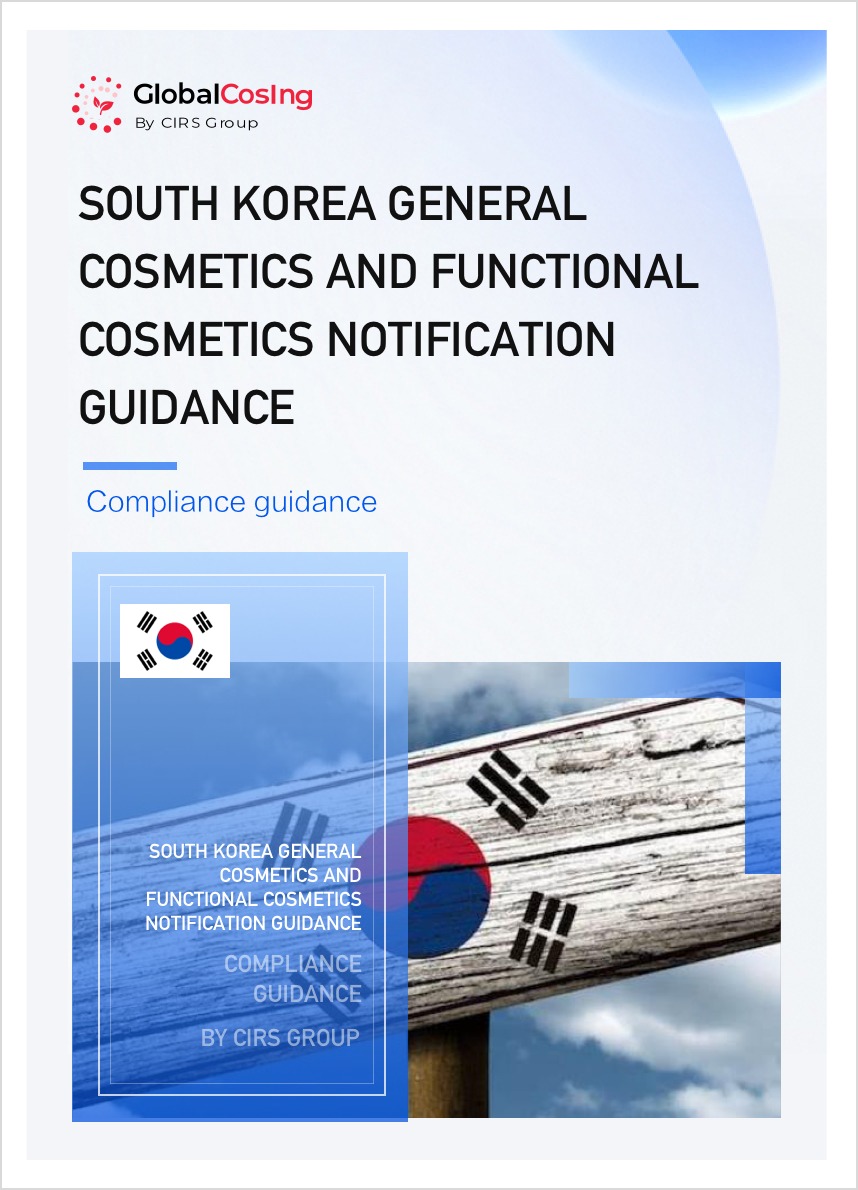7. Procedure and Documentation Requirements for Cosmetics Notification
7.1 Overview of Procedure and Documentation Requirements
All cosmetics must be registered through the Korea Pharmaceutical Traders Association (KPTA) online platform. Among them, functional cosmetics must be registered with the Ministry of Food and Drug Safety (MFDS), and all products are also required to submit their ingredient lists to the Korea Customs Service (KCA) for notification.
The required documents for product registration via the KPTA online platform include:
- Standard Pre-Import Notification Application Form (electronic format submitted online)
- Importer’s Business Registration Certificate and a copy of the Cosmetic Sales Business Registration Certificate
- Certificate of Free Sale (CFS) -original copy
- Certificate of Manufacture (including product name, ingredients and concentrations, responsible person’s signature, etc.) -original copy
- BSE/TSE-related documents (Certificate of Origin or Certificate of No Ruminant Animal Ingredients) -original copy
- For functional cosmetics, product review or report documents-copy
- Other information (e.g., manufacturing batch number, expiration date, etc.)
7.2 General Cosmetics Notification Procedure

*Products from different import batches must be re-notified to KPTA.
7.3 Functional Cosmetics Notification Procedure

*Products from different import batches must be re-notified to KPTA.
For functional cosmetics, unlike general cosmetics, it is necessary to first determine the type of registration before preparing the corresponding documentation. The registration types are categorized into Report Type and Review Type, each of which is subject to different regulatory submission requirements.
Notification Type: After completing and submitting the notification form, the National Institute of Food and Drug Safety Evaluation (NIFDS) confirms the notification, thereby completing the reporting process.
Type 1:
Functional cosmetics that meet the relevant requirements regarding efficacy, types of ingredients, ingredient concentrations, usage methods, usage amounts, and test methods, as announced by the MFDS Minister.
Type 2:
Products that conform to the same requirements as previously approved products.
Requirements: Type, specification, and concentration of the main active ingredients; efficacy; quality control standards; test methods; usage methods; usage amounts; and dosage forms.
Note: The following functional cosmetics are only applicable if their efficacy has been demonstrated through comparative testing with an approved product: whitening, wrinkle improvement, relief of hair loss symptoms, restoration of skin barrier function, reduction of stretch marks.
Type 3:
Products that conform to the same requirements as previously approved sunscreen products, and functional cosmetics for whitening and wrinkle improvement as announced by the MFDS Minister.
Requirements: Type, specification, and concentration of the main active ingredients; efficacy; quality control standards; test methods; usage methods; usage amounts; and dosage forms.
Approval Type: Submit the application form along with the required review documents. The NIFDS (National Institute of Food and Drug Safety Evaluation) will conduct the review, which will be completed within 60 working days, and the review result will be notified.
The review documents required for functional cosmetics include:
- Documentation on the origin and development background
- Safety-related data (single-dose toxicity test data, skin irritation test data, eye mucosal or other mucosal irritation test data, skin sensitization test data, phototoxicity and photosensitization test data, human skin patch test data)
- Efficacy or functional performance data (efficacy test data, human application test data)
- Data related to sun protection factor (applicable only to sunscreen products)
- Standards and test method data (including samples)




